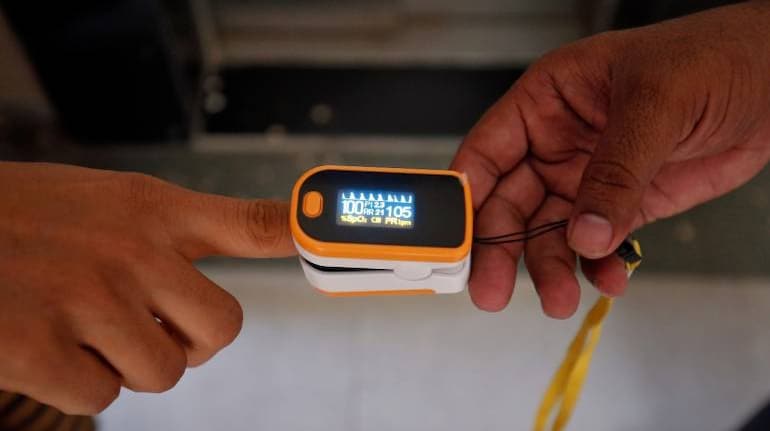What are normal levels, and when should I worry?
Normal SpO2 is usually at least 95%. Some patients with chronic lung disease or sleep apnea can have normal levels of around 90%.
A medical professional should be consulted when the SpO2 reading is below the baseline, or according to the protocol of the medical center, if the patient is a resident of a long-term care facility; or has been previously evaluated by a physician for concerns related to fever or chills, cough, shortness of breath or shortness of breath, muscle or body aches, stuffy or runny nose.
Supplemental oxygen or other treatments might be needed.
Normal readings are typically lower for people who live significantly above sea level. Other factors can also interfere with how well a pulse oximeter works, says Georgine Nanos, M.D., a family. Normal pulse oximeter readings usually range from 95 to 100 percent. Values under 90 percent are considered low. Hypoxemia is a below-normal level of oxygen in your blood, specifically in the arteries. Hypoxemia is a sign of a problem related to breathing or circulation, and may result in various symptoms, such as shortness of breath. A healthy person should be able to achieve normal blood oxygen saturation levels (SpO2) of 94% to 99% consistently. For patients with mild respiratory diseases, the SpO2 should be 90% or above. Supplementary oxygen should be used if SpO2 levels falls below 90%, which is unacceptable for prolonged periods of time. According to the Mayo Clinic, normal pulse oximeter readings usually range from 95 to 100 percent. Values under 90 percent are considered low, and indicate the need for supplemental oxygen. This condition is often referred to as hypoxemia, and its symptoms include severe shortness of breath, increased heart rate and chest pain. So, what is the normal pulse oximeter reading? Typically, blood oxygen saturation level should be at least 89 percent. Most healthy people have a blood oxygen saturation level of 95 and 97 percent. Oxygen concentration level of 92 percent of below can indicate a potential for hypoxemia, an oxygen deficiency in the tissues.
My movies for mac free download. Other people should contact a health care provider if they experience shortness of breath or when measured SpO2 is <95%.
Contents
What is a good pulse oximeter reading?
Your pulse oximeter will show you your oxygen level as “SpO2.” Normal oxygen levels are at least 95%. Some patients with chronic lung disease or sleep apnea can have normal levels of around 90%.
If your home SpO2 reading is less than 95%, call your health care provider.
A pulse oximeter might be a helpful tool for you to monitor your health and help know if you need medical care. While a pulse oximeter may help you feel some control over your health, it does not tell the whole story.
Oximeter Normal Level
Your oxygen level measured by a pulse oximeter is not the only way to know how sick you are. Some people may feel very sick and have good oxygen levels, and some may feel OK but have poor oxygen levels.
You might also have low oxygen levels if you feel short of breath, are breathing faster than usual, or feel too sick to do your usual daily activities. Call a health care provider right away if you have these symptoms.
Blood oxygen level normal range
What does “blood oxygen level” mean?

“Blood oxygen level” describes the amount of oxygen you have circulating in your blood.
Our bodies need oxygen to function. Oxygen enters the body through the nose and mouth and passes through the lungs into the bloodstream.
Once in the bloodstream, oxygen helps replace cells that wear out, provides energy for our bodies, supports the way our immune system functions, and more.
Low blood oxygen levels indicate that there may be an issue with your lungs or circulation.
Oximeter Normal Range By Age
Normal oxygen level for adults
Why is there an increased interest in blood oxygen levels?
People started to buy pulse oximeters to measure blood oxygen levels at home when they learned that low levels could be symptoms of the pandemic.
Shortness of breath is a well-known symptom, but it’s not always easy to detect. Some thought this device could be a tool to help self-assess for signs and symptoms.


There have also been reports of “silent hypoxia” where peoples’ oxygen levels are dangerously low, but they don’t necessarily experience shortness of breath.

Best pulse oximeter for accurate reading at home
What are the 2 readings on a pulse oximeter?1. Blood Oxygen Saturation (SpO2): The measurement that indicates what percentage of blood is saturated.
2. Pulse Rate: Pulse rate is nothing but the heart rate that indicates the number of times a heart beats per minute.
The best finger to use it on is the middle finger. We assume that right middle finger and right thumb have the most accurate value that reflects the arterial oxygen saturation.
Can masks cause low oxygen levels?Absolutely not. We wear masks all day long in the hospital. The masks are designed to be breathed through and there is no evidence that low oxygen levels occur.
Medical grade Pulse Oximeter made in USA
- Ever wonder if there are pulse oximeters made in the USA?
- How many medical device manufacturers are there in the United States?
FDA approved pulse oximeter
Pulse oximetry is a test used to measure the oxygen level (oxygen saturation) of the blood. It is an easy, painless measure of how well oxygen is being sent to parts of your body furthest from your heart, such as the arms and legs.
Fingertip Pulse Oximeters
Oximeter Normal Rate
- What is the best pulse oximeter?
- What is a normal oxygen saturation level?
- Are any oximeters made in the USA?
- Pulse oximeters FDA approved and more…
Oximeter Normal Readings Covid
Pulse Oximeters: Answering Your Frequently Asked Questions
